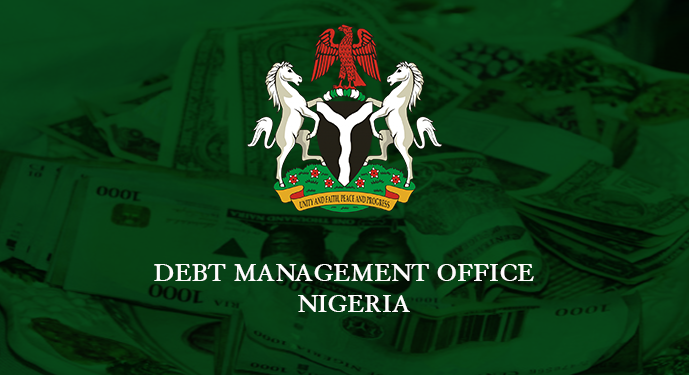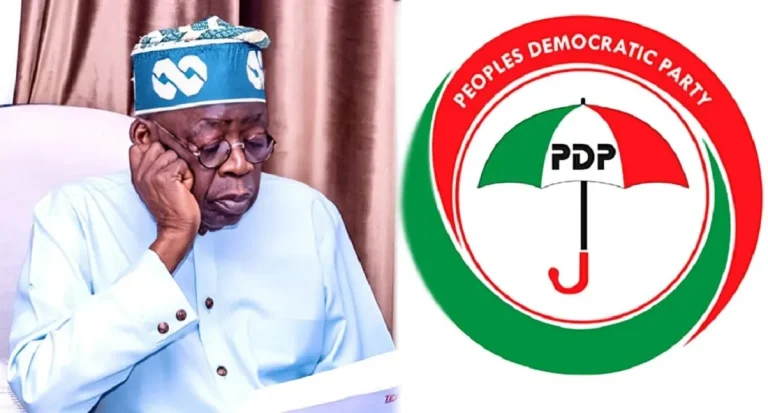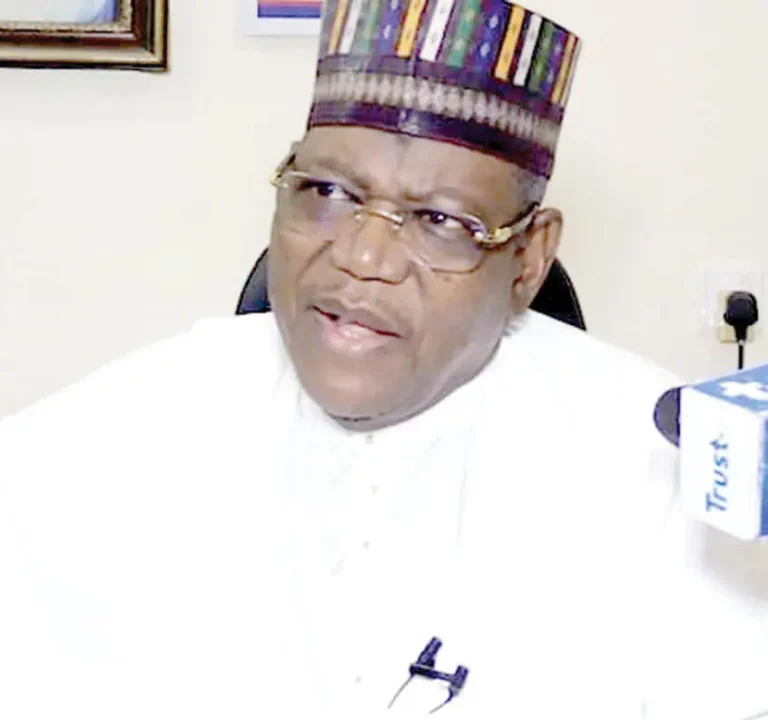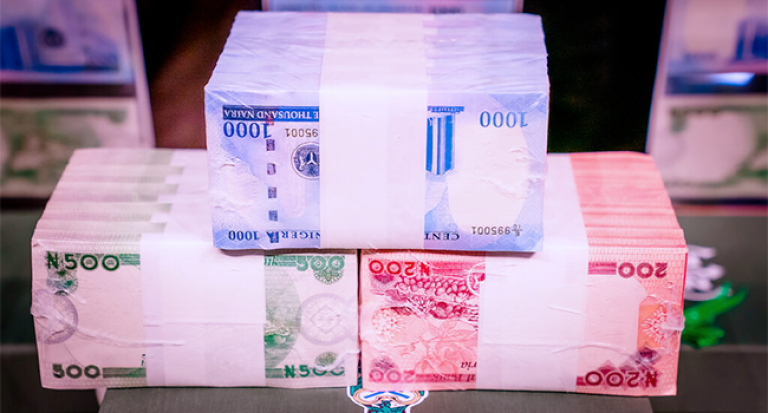
By UCHE USIM, Abuja
With Nigeria’s total debt stock currently pegged at N32.915 trillion (as at December 31, 2020), many are worried that the country is being boxed into a debt trap it may never wriggle out from in decades to come.
The figure, released by the Debt Management Office (DMO), includes local and external debt of the federal, state governments and the Federal Capital Territory.
According to economic experts, plausible reasons for the swell in the external debts include lower oil prices, disproportionate spending, COVID-19, defence of the exchange rate, over-reliance on crude oil receipts (with all its volatilities) and poor economic diversification agenda, among others.
Between July 2015 when President Muhammadu and December 2020, Nigeria’s debt rose by approximately N20.8 trillion, according to the DMO.
This period corresponds with the Presidency of Buhari, who assumed leadership of the country on May 29, 2015.
According to the statistics, Nigeria’s total debt as at June 30, 2015 stood at N12.12 trillion.
However, by December 31, 2020, the country’s debt portfolio had risen to N32.92 trillion.
In 2015, Nigeria’s debt was N12.6 trillion. It rose to N17.4 trillion in 2016 and then N21.7 trillion in 2017.
In 2018, the country’s debt had climbed to N24.4 trillion. It ballooned to N27.1 in 2019 and finally N32.915 trillion as at December 31 last year.
This shows that within a period of 66 months (five and half years), the country’s debt grew by N20.8 trillion.
It also means that within the period, the country’s debt portfolio rose by 171.62 per cent.
Domestic sources accounted for N20.21 trillion, while external sources accounted for N12.71 trillion.
In percentage terms, external debts accounted for 38.6 per cent of the total debt portfolio while domestic debts accounted for 61.4 per cent.
The country’s increasing debt profile is also reflected in the growing cost of debt servicing which has further depleted the nation’s dwindling revenues in recent years.
Within the period of 66 months under review, the country spent N10.26 trillion on debt servicing.
While servicing local debts gulped N8.53 trillion between July 2015 and December 2020, servicing external debts gulped N1.72 trillion from 2016 to December 2020 (external debt servicing converted to naira at the exchange rate prevailing at the time, provided by the DMO).
The data provided by the DMO showed that from July to December 2015, N489.59 billion was spent on servicing local debts.
From January to December, a total of N1.23 trillion was spent to service the country’s domestic debts in 2016. The figure rose to N1.48 trillion in 2017.
In 2018, the country’s domestic debt servicing bill rose to N1.8 trillion. The cost of domestic debt servicing came down a bit in 2019 to N1.69 trillion. In 2020, it rose again to N1.85 trillion.
On the other hand, external debt servicing consumed $353.09 million in 2016. It went up to $464.05 million in 2017 and jumped up to $1.47 billion in 2018.
In 2019, the nation spent $1.33 billion on external debt servicing. In 2020, external debt servicing gulped $1.56 billion.
To rescue the country from the thorny situation, President Buhari has been going cap in hand begging for debt relief for the country at different international fora, but without success thus far.
His efforts mimic those of Dr Ngozi Okonjo-Iweala in 2006, when she led Nigeria and the Paris Club to seal a final agreement for debt relief worth $18 billion and an overall reduction of Nigeria’s debt stock by $30 billion.
On his part, the Governor, Central Bank of Nigeria (CBN), Mr Godwin Emefiele has called on the state governors to wean themselves off the addiction to loans and monthly federal subvention by investing heavily in agriculture, especially in crops they have comparative advantage. With that, they can help solve the food insecurity nightmare and go into massive exports to pay their debts and build prosperity for their respective states.
The rise in the country’s debt servicing reflected the nation’s increasing commitment to external loans.
The debt accumulation is coming at a time when key government officials in the Economic Management Team have repeatedly defended the country’s debt level, arguing that it is still within sustainable limits.
The Minister of Finance, Budget and National Planning, Mrs Zainab Ahmed has severally insisted that Nigeria does not have a debt problem.
According to her, what the government needed to do was to increase its revenue generating capacity in order to boost revenue to about 50 per cent of Nigeria’s Gross Domestic Product (GDP).
“Nigeria does not have a debt problem. What we have is a revenue problem.
“Our revenue to GDP is still one of the lowest among countries that are comparable to us. It’s about 19 per cent of GDP and what the World Bank and IMF recommended is about 50 per cent of GDP for countries that are our size. We are not there yet. What we have is a revenue problem”, she posited at a recent Finance Summit.
However, the Finance Minister’s position differs with that of some economic experts who said that the huge borrowings portend danger for the economy.
For instance, a Chartered Accountant, Mr Ezekiel Ifeanyi said the Federal Government’s current fiscal position constrains it from embarking on such huge expenditure as a result of accumulated large deficits over the past few years.
He said that the huge debt remains a burden for the economy, adding that time has come for Nigeria to begin to seek debt relief from its creditors.
“We have repeatedly said that the government should cut its coat according to its cloth. It must look for where and how to reduce its over-bloated governance structure that has been consuming so much. And there are one thousand and one budget heads they can do away with without retrenching workers. The Oronsaye Panel’s report recommendation that ministries and agencies of government should be merged is still unimplemented.
“So, borrowing is a lazy way of escaping from reality. If you cannot afford a particular lifestyle, commonsense dictates that you should come back and restructure your lifestyle to suit your income. But rather than doing this, the government keeps on borrowing to satiate its appetite for luxury and flamboyance.
“Well, we are not in support of this and we will want the government to be very prudent and mindful of the future of our economy, the future of the project called Nigeria and the future of generations yet unborn”, Ezekiel stated.
Also, a former Deputy Governor of the Central Bank of Nigeria (CBN), Prof. Kingsley Moghalu, at a virtual conference organised by Elombah Television in 2020, warned that with the rise in the country’s debt service to revenue ratio, Nigeria was heading towards a sovereign debt crisis.
He noted that the terms and conditions attached to the Chinese loans were not favourable to Nigeria.
The former presidential candidate canvassed public private partnership (PPP) as the best and sustainable way to fund strategic infrastructure projects.
He said: “The number one problem is not just Nigeria’s loan to China, but it is the broader external indebtedness. Nigeria is essentially walking into a sovereign debt crisis.
“When you consider that we now spend virtually all that we earn servicing foreign debt.
“In the first quarter of 2020, the Federal Government’s total revenue was about N950 billion, but we spent N943 billion servicing external debt, which was about 99 per cent. Is a country on this path fiscally viable?
“We are taking more and more of these loans and we are told by the Debt Management Office (DMO) that our debt to GDP ratio is under control and is below 30 per cent, and that it does not matter.”
He explained that 90 per cent of Nigeria’s revenue “is from crude oil. So, when those revenues are plunging, then that is a huge risk because your debt obligations are fixed.
“So, if there is such a serious mismatch between what you are earning and what you have to pay those you are owing, then you have a crisis. And that is the real problem for Nigeria today with its loan from China.”
The bulk of Nigeria’s lenders are offshore corporations, with China being Nigeria’s biggest creditor.
Nigeria has agreed $5.6 billion in loans with China. But as of March 2020, Beijing had disbursed $3.3 billion. With Nigeria already servicing the loans, $3.1 billion was outstanding as at then.
However, commenting on the rising debt, the DMO explained that it was not an entirely gloomy situation. It noted that after Nigeria exited recession in 2017, the level of new borrowing at the federal level, as shown in the annual Appropriation Acts, had been declining as part of the government’s measures to moderate the rate of growth in the public debt stock in order to ensure debt sustainability.
The DMO added that new borrowing to part-finance budget deficits had declined steadily from N2.36 trillion in 2017 to N2.01 trillion in 2018. It was N1.61 trillion in 2019 and N1.59 trillion in the 2020 Appropriation Act.
“This trend was reversed in 2020 due to the economic and social impact of the COVID-19 pandemic as new borrowing in the revised 2020 Appropriation Act was N4.20 trillion. Many countries including the advanced countries also increased their level of borrowing as a result of COVID-19.
“It should be noted though, that apart from the new domestic borrowing of N2.3 trillion, the other new borrowings were concessional loans from the International Monetary Fund ($3.34 billion) and other multilateral and bilateral lenders.
“This incremental borrowing to part-finance the 2020 budget and the additional issuance of promissory notes to settle some arrears of the Federal Government of Nigeria, contributed to the increase in public debt stock. New domestic borrowings by state governments also contributed to the growth in the public debt stock.
“Total public debt to GDP as at December 31, 2020 was 21.61 per cent which is within Nigeria’s new limit of 40 per cent. The various initiatives of the government to increase revenues such as the Strategic Revenue Growth Initiative and the Finance Act, 2020, should help shore up government’s revenue and reduce the debt service to revenue ratio”, the DMO explained.
But amid fears of Nigeria’s high debt exposure to China, the DMO reassured that there was nothing to panic about as the loans were concessional with interest rates of 2.50 per cent per annum, tenor of 20 years and a moratorium of seven years.
It added that the communist country was not a major source of funding for the Federal Government, despite the fact that total borrowing from China, as at March 31, 2020, stood at $3.121 billion or N1,126.68 trillion using the N361/$1 conversion template.
The DMO ruled out the possibility of China taking possession of the projects financed by them if Nigeria defaults in servicing the loan.
The DMO emphasized that Nigeria explicitly provides for debt service on its external and domestic debt in its annual budgets, adding that a number of the projects being (and to be) financed by the loans are either revenue generating or have the potential to generate revenue.
It added that the $3.121 billion Chinese debt represents only 3.94 per cent of Nigeria’s total public debt of $79.303 billion (N28,628.49 trillion at $1/N361) as at March 31, 2020.
DMO said: “Similarly, in terms of external sources of funds, loans from China accounted for 11.28 per cent of the external debt stock of $27.67 billion at the same date.
“These data show that China is not a major source of funding for the Nigerian government.
The terms of the loans are compliant with the provisions of Section 41 (1a) of the Fiscal Responsibility Act, 2007. In addition, the low interest rate reduces the interest cost to the government, while the long tenor enables the repayment of the principal sum of the loans over many years.
“These two benefits make the provisions for debt service in the annual budget lower than they would otherwise have been if the loans were on commercial terms”.
The DMO further explained that the $3.121 billion Chinese loans are project-tied facilities.
It listed the 11 projects as; Nigerian Railway Modernization Project (Idu-Kaduna section), Abuja Light Rail Project, Nigerian Four Airport Terminals Expansion Project, (Abuja, Kano, Lagos and Port Harcourt), Nigerian Railway Modernization Project (Lagos-Ibadan section) and Rehabilitation and Upgrading of Abuja – Keffi- Makurdi Road Project.
It further noted that the impact of these loans is not only evident but visible. For instance, the Idu – Kaduna rail line has become a major source of transportation between Abuja and Kaduna. Also, the new International Airport in Abuja, has improved air transportation for the populace, while the Lagos – Ibadan rail line when completed, will ease traffic on the busy Lagos-Ibadan expressway.
“The projects also have the added benefits of job creation, not only by themselves but through direct and indirect service providers, a number of which are Small and Medium Enterprises.
“It is widely accepted that investment in infrastructure is one of the most effective tools for countries to achieve economic growth and development. Using Loans from China to finance infrastructure is thus in alignment with this position.
“The principal process and requirements for borrowing by the government are expressly stated in the Debt Management Office Establishment (ETC) Act, 2003 (DMO Act) and the Fiscal Responsibility Act, 2007. Section 21 (1) of the DMO Act, ‘No External loan shall be approved or obtained by the Minister unless its terms and conditions shall have been laid before the National Assembly and approved by its resolution’ and Section 41 (1a) of the FRA, ‘Government at all tiers shall only borrow for capital expenditure and human development, provided that, such borrowing shall be on concessional terms with low interest rate and with a reasonable long amortization period subject to the approval of the appropriate legislative body where necessary’, are instructive in this regard.
“The Federal Ministry of Finance, Budget and National Planning works with the MDAs under whose portfolio a proposed loan falls and also with the DMO. Thereafter, the approval of the Federal Executive Council (FEC) is sought. It is only after the approval by FEC that His Excellency requests for the approval of the National Assembly as required by Section 41 of the Fiscal responsibility Act, 2007. More importantly, it is only after the approval of NASS that the loans are taken and Nigeria begins to draw down on the loans.
“The loan agreements are reviewed by legal officers of the Federal Ministry of Justice and the Legal Opinion of the Honourable Attorney General of the Federation and Minister of Justice is obtained before any External Loan Agreement is signed”, the DMO added.
Commenting on Nigeria’s ballooning debt profile, Nigeria’s first professor of the Capital Markets and former Imo State Finance Commissioner, Prof Uche Uwaleke explained that the crash in revenue generation always leads the Nigerian government to borrow.
“The way forward is to make conscious efforts to have multiple streams of income, including through embracing the private sector to develop the enabling environment for this to happen. The economy has remained vulnerable to external shocks due to inability to hugely diversify revenue sources.
“Not surprisingly, the economy went into recession twice since 2015 owing in part to fall in crude oil prices and the forex challenge that came with the two cycles.
“Regrettably, there is no evidence to suggest that the bulk of the borrowing has gone into self-liquidating capital projects. A major cause of naira depreciation is the huge forex spent importing petroleum products in a period of rising crude oil prices. The huge cost of servicing external debt is also a drain on external reserves.
“The lasting solution is to create multiple sources of forex via export diversification and to curtail demand through import substitution and patronizing locally made products”, he stated.
But the Special Assistant to President Muhammadu Buhari on Niger Delta Affairs, Senator Ita Enang, said at a recent Chartered Institute of Taxation of Nigeria 2021 Fellow Conferment ceremony in Lagos, that Nigeria was adopting the best practices of sustainable debt management.
According to him, the repayment plan of the debt is tied to the projects for which the loan is taken.
The presidential aide noted that “all the terms and conditions of the loans are laid before the National Assembly and approved in detail before execution.
“This is to avoid the terms being approved by the National Assembly after the loan agreement must have been executed. A number of projects being and to be financed by the loans are either revenue generating or have the potential to generate revenue”.
The above assertion notwithstanding, experts insist there is a need for Nigeria to build revenue to have more space to spend for infrastructure, social safety nets and others. This is to avoid interest on the loans eating up the bulk of the revenue. (Sunday Sun)








575083 847111You designed some decent points there. I looked over the internet for any issue and discovered most individuals goes as properly as along with your web web site. 781684
379454 225051Merely a smiling visitor here to share the love (:, btw great style and design . 895830